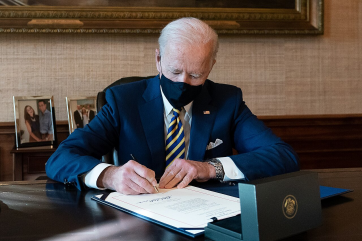Human Face Evolved From Violence; New Research Finds Man's Facial Structure Was Shaped by Punching
By Russell WesterholmNew research suggests fist fighting contributed to the evolution of a more bulky human face with bones tough enough to withstand a punching.
According to BBC News, the new study, published in the journal Biological Reviews, found that the facial bones most often broken while fighting are the ones that have apparently strengthened most. Those bones are also distinctly different between males and females.
Scientists previously believed this evolution in facial structure was to adapt to a diet that included nuts, seeds and grass. However, the new study finds violence is a more likely contributor. Early humans would have fought over women and resources and this violence eventually led to the strengthening of the facial bones.
"The australopiths were characterized by a suite of traits that may have improved fighting ability, including hand proportions that allow formation of a fist; effectively turning the delicate musculoskeletal system of the hand into a club effective for striking," study lead author David Carrier, a biologist at the University of Utah, said in a press release. "If indeed the evolution of our hand proportions were associated with selection for fighting behavior you might expect the primary target, the face, to have undergone evolution to better protect it from injury when punched."
Study co-author Michael H. Morgan, a physician at the University of Utah, said he hopes the new study contributes to a growing conversation about the role of violence in human evolution.
"I think our science is sound and fills some longstanding gaps in the existing theories of why the musculoskeletal structures of our faces developed the way they did," he said in the release. "Our research is about peace. We seek to explore, understand, and confront humankind's violent and aggressive tendencies. Peace begins with ourselves and is ultimately achieved through disciplined self-analysis and an understanding of where we've come from as a species. Through our research we hope to look ourselves in the mirror and begin the difficult work of changing ourselves for the better."
Carrier said the study is a scientific look at the evolution of the human face and simultaneously an argument suggesting violence dates back farther than we know.
"The debate over whether or not there is a dark side to human nature goes back to the French philosopher Rousseau who argued that before civilization humans were noble savages; that civilization actually corrupted humans and made us more violent," he said in the release. "This idea remains strong in the social sciences and in recent decades has been supported by a handful of outspoken evolutionary biologists and anthropologists. Many other evolutionary biologists, however, find evidence that our distant past was not peaceful.
"The hypothesis that our early ancestors were aggressive could be falsified if we found that the anatomical characters that distinguish us from other primates did not improve fighting ability. What our research has been showing is that many of the anatomical characters of great apes and our ancestors, the early hominins (such as bipedal posture, the proportions of our hands and the shape of our faces) do, in fact, improve fighting performance."








